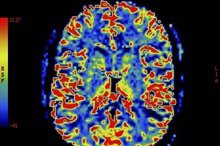Do Carbs or Protein Burn First?
Athletes, the health conscious and those who are watching their weights face a confusing array of diet choices. Low-carb, low-fat, low-protein or their dietary opposites all deliver energy in different ways. Carbohydrates and proteins are the key variables in many weight loss diets. Understanding how each is broken down for fuel can help you choose a diet that suits your body and its energy needs.
Carbs First
Carbohydrates are the go-to choice for quick energy. The body will burn carbs for fuel before turning to the other macronutrients -- proteins and fats -- because less work is required to break down carbohydrates into glucose, which enters the bloodstream. The glucose is delivered to the brain, muscles and organs to provide energy that can be instant or time-release, depending on the type of carbs you eat.
Slow and Fast Carbs
Carbohydrates Burned During Exercises
Learn More
Both simple and complex carbohydrates have their uses as energy sources. Simple carbohydrates are sugars found in juice, candy, and sugared sodas and a sugar called lactose in milk. They break down immediately and enter the bloodstream but are quickly used up. Relying on simple carbs for energy can result in yo-yo blood sugar levels and a crash when the fuel is depleted. Complex carbohydrates are the best fuel. They break down more slowly, releasing energy in a gradual and steady supply. Complex carbs like whole grains, breads and potatoes are starches that supply long-lasting energy. Fiber is a complex carbohydrate that provides energy from nutrients in vegetable and fruits as soluble fiber. Insoluble fiber, from grains and some vegetables and fruits, slows the digestion of nutrients and balances the release of energy over time.
Carbs and Calories
Carbohydrates supply 4 calories per gram and they fuel muscle movement as well as the digestive system and the central nervous system. If you consume more carbohydrate than you need for energy, the body breaks it down into glucose, which is then stored as glycogen in the liver and the muscles. Once the glucose in the bloodstream is depleted, that glycogen is available for energy. According to Iowa State University Extension, you can only store about 2000 calories of glycogen and as such, any extra glucose is stored as fat. Maintaining a healthy weight with adequate stores of energy requires balancing carbohydrate intake with energy expenditure.
Proteins as Energy
The Digestive & Circulatory Systems Converting Food Into Energy
Learn More
The other macronutrients – proteins and fats – are slower to break down and respond differently from carbohydrates as fuels. Proteins are primarily the means to grow tissue and repair damage. Carbohydrates actually protect protein from being used as an energy source so it remains available to build and rebuild muscle. Iowa State University Extension notes that if there is a deficit of carbs, protein will provide the glucose to keep blood sugar levels even, but this is an inefficient use of protein and an energy fail-safe, not a first choice.
Fats
Fats are burned as fuel during endurance exercise. They are tougher to break down, but they contain more energy than proteins and carbohydrates. According to Purdue University, fats don’t begin to break down until physical activity is well underway, usually about 20 minutes or more into a workout. The longer an endurance activity continues, the more the body turns to fat for fuel. So, if you are a marathon runner, you use fats to get across the finish line. But if you are a sprinter, you burn carbs to push ahead of the pack.
Related Articles
Writer Bio
Benna Crawford has been a journalist and New York-based writer since 1997. Her work has appeared in USA Today, the San Francisco Chronicle, The New York Times, and in professional journals and trade publications. Crawford has a degree in theater, is a certified Prana Yoga instructor, and writes about fitness, performing and decorative arts, culture, sports, business and education .








